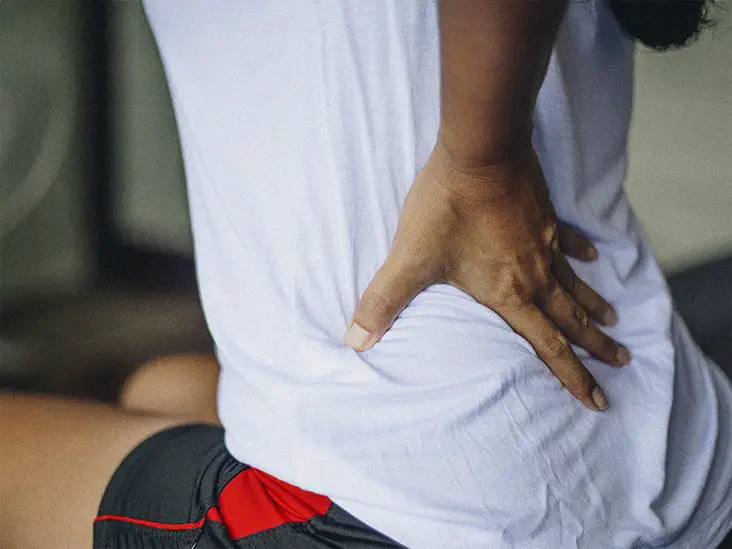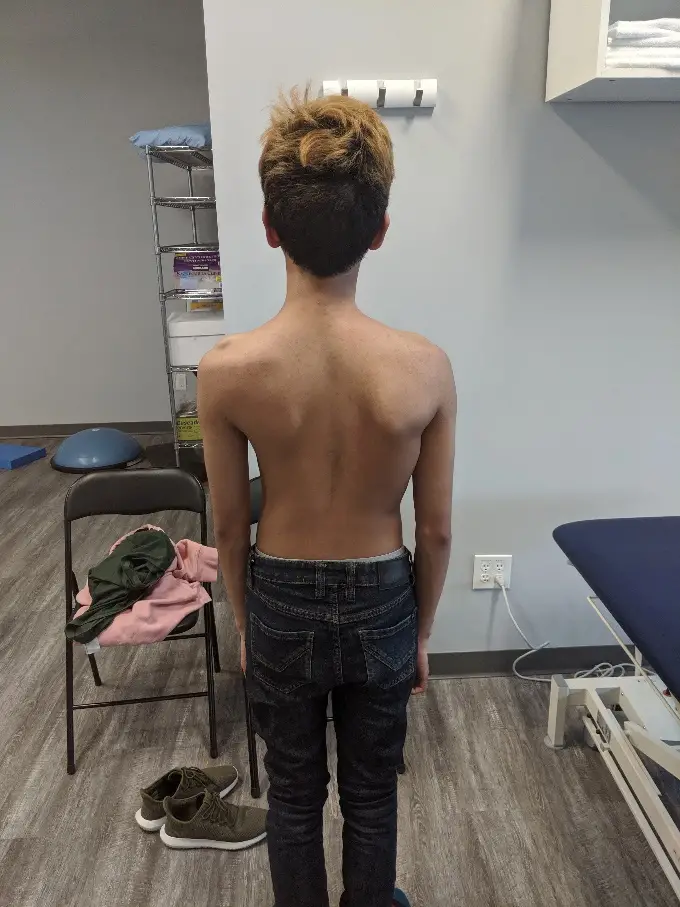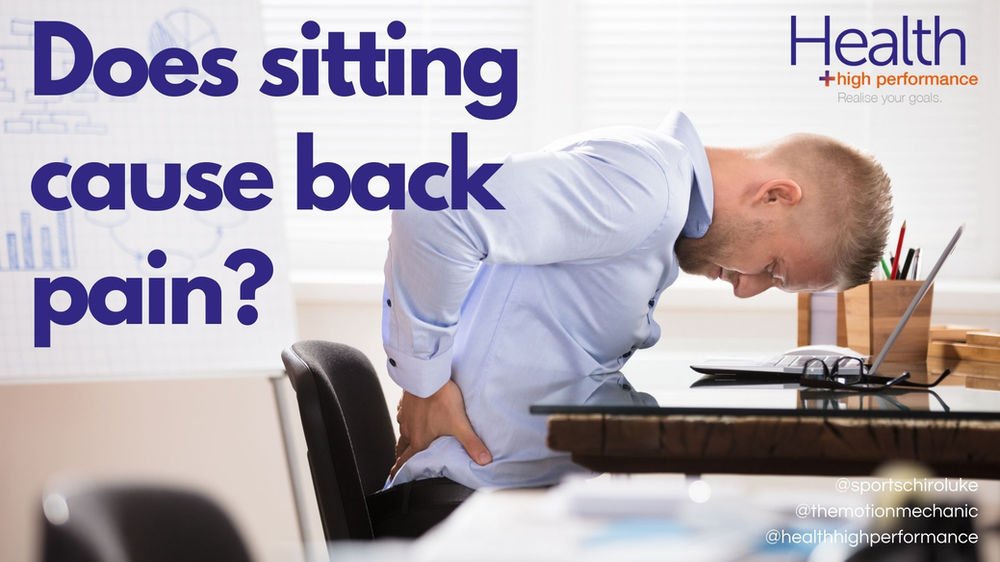The Solution To Back Pain
To find a solution, you can ask yourself another question: Can sitting in a recliner cure/relieve back pain? A recliner can, in several ways, minimize your chances of getting back pain.
You can use a recliner to support your back. The ergonomics of a recliner keep your back well enough to avoid back pain. Sitting for a very long time is not healthful in any condition.
So, you can lean back on the backrest of the recliner and rest as much as you want. An extended footrest adds extra support to your legs and ultimately supports your back muscles.
Hence, you may get a recliner to relieve your back from pain and tiredness. It will give a satisfactory answer to is a recliner bad for your back? The use of orthopedically designed back pillows and seats will add comfort and relief to your hurting back.
Can Lower Back Pain Come From Sitting Too Long
The longer you sit, the more you slouch and slack on your posture. So, yes, it is possible to get lower back pain from sitting. Many people sit slouched on their tailbone like when seated on a sofa or recliner. This can cause problems overtime with surrounding ligaments and develop a weak core muscle. Sitting too much also causes the hamstring muscles and hip flexors to shorten which puts extra strain on your lower back.
You may want to consider sitting with your hips and knees at about a 90 degree angle. Feet flat on the floor and add a stool or book if you need to help create that 90 degree positioning. If your chair does not have lumbar support you can create your own with a lumbar pad or pillow. Lumbar support helps you achieve neutral positioning. Your elbow should also rest in a neutral position close to 90 degrees. Your neck posture may contribute to your lower back discomfort. Whatever you are viewing should meet a neutral gaze at eye level. Being on your phone, computer, laptop, or tablet for extended periods of time creates poor posture habits and strains your muscles. Proper sitting posture combined with intermittent stretch breaks will help you become more mindful of your seated posture.
Sit With Support And Get Up Every Hour
While sitting and working on an office chair, keep your back flush against your chair, your head over your spine, your shoulders rolled back, and shoulder blades down. Bend your arms at a 75 to 90-degree angle at the elbows. Your legs must be hip-distance apart with both feet flat on the floor. If you are unable to reach the floor, use a footrest.
You May Like: Can Back Pain Cause Chest Pain
Comparison Of Body Perceived Discomfort
After sitting for 30 min, body discomfort was significantly increased in the both groups and there were significant differences between groups .
Mean of perceived discomfort after prolonged sitting with slumped posture. * Significant differences between pre and posttest . Significant differences between the group .
Speak To A Professional

If you feel like youve tried everything and youre still experiencing back pain when sitting down, its time to speak with a professional. A trained chiropractor can help to ease stress and tension in your joints and muscles, freeing up your movement and reducing pain.
Contact our team of experts today to find out more about how we can help reduce your back pain.
You May Like: What Can I Do To Ease My Lower Back Pain
Adjusting Your Sleeping Position
If you go straight to sleep after sitting down all day, your bodys natural tendency is to replicate the same posture you had while you were in your chair. This is bad for two reasons: it prevents your body from stretching after being stuck in one position for so long, and it decreases the quality of sleep that you get.
Adjusting your sleeping position by adding more pillows, adjusting your mattress, or getting a weighted blanket can help manage the back pain from sitting down all day. It also helps your body recover faster from staying still for so long and allows it to regain the natural curvature of the spine.
Home Remedies For Lower Back Pain When Sitting
In addition to improving your posture when sitting, try these at-home remedies for lower back pain:
- Change your position. Consider a standing desk or one thats ergonomically designed to help you maintain good posture by allowing you to adjust the height of your monitor.
- Apply ice.Cold helps reduce inflammation that may be affecting your back. Leave the ice pack on for about 20 minutes, and then remove it. You can do this every hour or so.
- Use a heating pad. After any inflammation is under control , many people find heat soothing. It also promotes healing by bringing blood to your back.
- Take over-the-counter medication.Pain relievers like nonsteroidal anti-inflammatory drugs can reduce discomfort and swelling.
- Use a support. Placing a rolled-up towel or special lumbar pillow at the base of your spine while sitting will help you remember to sit up straight and provide you with some stability.
- Get a massage. This can help loosen and relax tight muscles.
- Consider yoga.Yoga is known for its ability to stretch and strengthen the body. Many programs allow for modification of the poses as needed.
There are several exercises that will help strengthen your lower back. Try these three stretching exercises to help make your back stronger and better toned:
Read Also: What Causes Pain Across The Upper Back
Sitting On An Uneven Surface
If your seat cushion, car seat, or sofa is too soft, it might make you sit unevenly. This means that your body might tilt to one side.
Sitting on an uneven or too soft surface can put more weight and pressure on one of your hips leading to pain. This commonly happens when you sit in bed to work or watch something on your laptop. It can also happen if you sit on a pillow on the floor or on a soft, sandy beach.
What Are The Causes Of Lower Back Pain When Sitting
Lower back pain is a common health condition typically affecting the lower portion of the spine and can stem from an injury , or a spinal problem such as arthritis or sciatica. Common causes of lower back pain when sitting include prolonged time spent in a chair, lack of regular exercise, and poor posture.
Read Also: How To Relieve Lower Back Pain From Pinched Nerve
Ergonomics For Prolonged Sitting
Sitting for prolonged periods of time can be a major cause of back pain, cause increased stress of the back, neck, arms and legs and can add a tremendous amount of pressure to the back muscles and spinal discs. Additionally, sitting in a slouched position can overstretch the spinal ligaments and strain the spinal discs.
Besides being uncomfortable, poor sitting posture and workplace ergonomics over time can damage spinal structures and contribute to recurrent episodes of neck or back pain.
Here are some important guidelines to help make sure your work area is as comfortable as possible and causes the least amount of stress to your spine:
What Can I Do If I Have Acute Low Back Pain
The following advice will benefit a majority of people with back pain. If any of the following guidelines causes an increase of pain or spreading of pain to the legs, do not continue the activity and seek the advice of a physician or physical therapist.
The key to recovering from acute low back pain is maintaining the normal curve of the spine . Supporting the hollow of your back will help decrease your recovery time.
Follow these guidelines for 10 to 20 days after you experience acute low back pain:
Sitting
- Sit as little as possible, and only for short periods of time .
- Sit with a back support at the curve of your back.
- Keep your hips and knees at a right angle. Your legs should not be crossed and your feet should be flat on the floor.
Here’s how to find a good sitting position when you’re not using a back support or lumbar roll:
Correct sitting position without lumbar support.
Correct sitting position with lumbar support.
Driving
- Use a back support at the curve of your back. Your knees should be at the same level or higher than your hips.
- Move the seat close to the steering wheel to support the curve of your back. The seat should be close enough to allow your knees to bend and your feet to reach the pedals.
Standing
Stooping, squatting, and kneeling
Lifting objects
Reaching overhead
Sleeping and lying down
Other helpful tips
If you sleep on your back, put pillows under your knees and a small pillow under the small of your back.
Also Check: Does Mattress Cause Back Pain
Best Sitting Position For Lower Back Pain
For starters, lower back pain may be alleviated by changing your posture when you sit.
“The best position is to sit tall, with your chest up and shoulders down and back,” James says. “There should be a slight curve in your low back. Try to keep your head over your shoulders and not leaning forward.”
A small 2006 study in Scotland using magnetic resonance imaging found that sitting upright at a 90-degree angle put unnecessary strain on the backs of 22 healthy participants. Slouching reduced the height of their spinal discs, which could lead to wear and tear. The researchers concluded that the ideal sitting position is reclining backward at a 135-degree angle with your feet on the floor.
Why Prolonged Sitting Causes Upper Back Pain

Prolonged sitting is often accompanied by poor posture such as slouching and head craned forward. This leads to upper back muscle strain when the head is craned forward or when one is in a slouched position. Strained upper back muscles can lead to pain in the neck, shoulder, and head and face region, migraine headaches, knots in the back and other complications.
You May Like: How To Fix Back Pain Without A Chiropractor
The Problem With Soft Chairs
When you sit in a soft chair the seat usually sinks in and causes the same effect as when youre slouching in a chair. It is nearly impossible to sit in a good position on a very soft surface.
Over time this will cause the ligaments and muscles will stretch to a point where they can hurt and if you have any discs thats a little bit worn they will also start to moan.
Leaning Forward From Your Lower Back
Hunching over that keyboard or sitting on the couch with your phone and leaning forward from the lower back will very quickly lead to pain. This position puts pressure in your lower spine, compressing your discs and putting you at risk of injury. Sitting upright with your spine in neutral will take away that risk and leave you feeling far more comfortable in the long run.
You May Like: Can You Die From Back Pain
What Is The Most Common Cause Of Lower Back Pain
When it comes to lower back pain, the most common causes are mechanical and soft tissue injuries. This can include injuries to discs, compression of the nerve roots, and improper movement of the spinal joints. However, the most significant cause of lower back pain is a torn or pulled muscle or ligament. Any of these injuries can happen suddenly or develop over time.
Some common ways to hurt your back include:
- Lifting a heavy object
- Trauma
- Automobile accident
Lower back pain is common in most adults and if left unaddressed may unfortunately become worse with time. Most lower back pain is acute and goes away on its own. If this frustrating pain lasts longer than 12 weeks you could be experiencing a chronic condition requiring more than just rest. Its important to make posture corrections, incorporate mild exercise, and resist the urge to rest for long periods of time. Movement has shown to improve blood flow and healing to injured areas of the body. Incorporating different types of movement will help reduce your symptoms overtime.
Is My Recliner Hurting My Back
Recliners arent without their advantages However, theyre not a good choice for those who sit often. A recliner in front of the television with a remote, spending hours a day in itthat is not going to be good for your health, right? a doctor stated. Thats not the fault of the recliner but. This is a result of a generally sedentary life.
The problem with recliners is the fact that it promotes sitting. Certain people do not require this kind of support.
The best thing to do is to boost their exercise levels and alter their diet. It is possible to show an expert doctor and they will perform a procedure to relieve your joint pain however it wont change the reason you developed this joint pain in the first place it has been stated about habits that affect the bodys mass index and general health.
A lot of sitting is the main issue. Its true regardless of the kind of chair youre sitting in. Our bodies werent made to sit and relax, so take a break, kick back and unwind. Be aware that its meant to be a pleasant and short interval between your activities.
You May Like: Should I Go To Doctor Or Chiropractor For Back Pain
Can Back Pain Be Prevented
Recurring back pain resulting from improper body mechanics may be prevented by avoiding movements that jolt or strain the back, maintaining correct posture, and lifting objects properly. Many work-related injuries are caused or aggravated by stressors such as heavy lifting, contact stress , vibration, repetitive motion, and awkward posture.Recommendations for keeping ones back healthy
Can Sitting Cause Upper Back Pain
Back pain is the leading cause of muscle tightness and strain and every other person suffers from back pain. Upper back and neck pain is a worrisome situation since it prevents a person from going about their daily chores. The discomfort is present while standing, moving, sitting as well as other body movements. The pain limits movement and if not paid attention, it can either spread or worsen.
Read Also: Can A Chiropractor Help With Lower Back Pain
Preventing Back Pain From Sitting Too Long
Instead of worrying about all the ways you’re doing it “wrong,” consider a few tweaks to your posture or routine here and there because the reality is you’re going to have days where you forget to get up and move around or you have a lot more work than usual.
Here are some easy changes you can make to avoid back pain from sitting too long:
Slouching vs. hunching, posture vs. holding erect: Often times we’re told not to slouch because it’s “bad posture” but it is natural for the spine to curve and for us to bend over our work at times for example, looking at something while sitting up in bed. What is not natural is for us to hold that position for long periods of time. The same goes for sitting at a computer desk or a dining room table and thinking we have to keep our shoulders back and everything upright. This causes the muscles in the neck and lower back to work extra hard to keep everything in place, again putting too much tension for a long period of time.
Laptop accessories: If you’re still fiddling around with that touchpad, it’s time to get a separate keyboard, mouse and lap desk. Bringing the equipment to youand not vice versaallows you to sit up straighter when you’re not hunched over your laptop. (A word to the wise: Don’t be tempted by keyboard wrist rests with gel. These gel inserts can compress or cut off blood flow to the finger flexor tendons and can lead to carpal tunnel problems.
You’re Fighting A Natural Instinct

Vernikos believes that one of the biggest reasons our bodies respond to sitting with pain is due to our natural instinct to move.
“What I learned from my research is that the body needs to move, it has a biological need to move throughout our waking hours as the earth turns,” she said. “When we don’t move, we suffer.”
The pain is like a nudge to your brain that you need to move, to keep the body primed to flee any potential danger at a moment’s notice. The primitive instinct may have less of a place in our modern, safe-space filled lives, but it’s still a powerful driver toward better health and longevity.
Vernikos suggests reacting to sitting-related pain with increased movement. Even something as small as standing to reach for a water bottle or walking to the printer are enough to counteract some of the painful effects of sitting, Vernikos pointed out.
“You don’t need to be running on a treadmill to condition yourself, you can tune your body to on-off movement throughout the day.”
for our daily Thrillist email, and get your fix of the best in food/drink/fun.
Joni Sweet had perfect posture the entire time spent writing this article, she swears. Follow her on Instagram and Twitter at @JoniSweet.
- Cookie Settings
Read Also: When I Sneeze My Lower Back Hurts